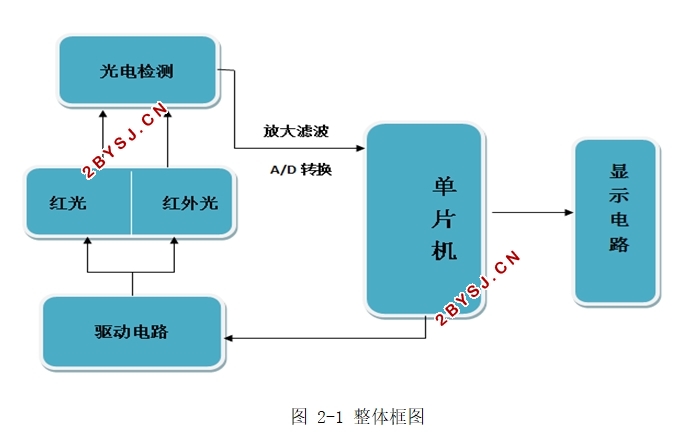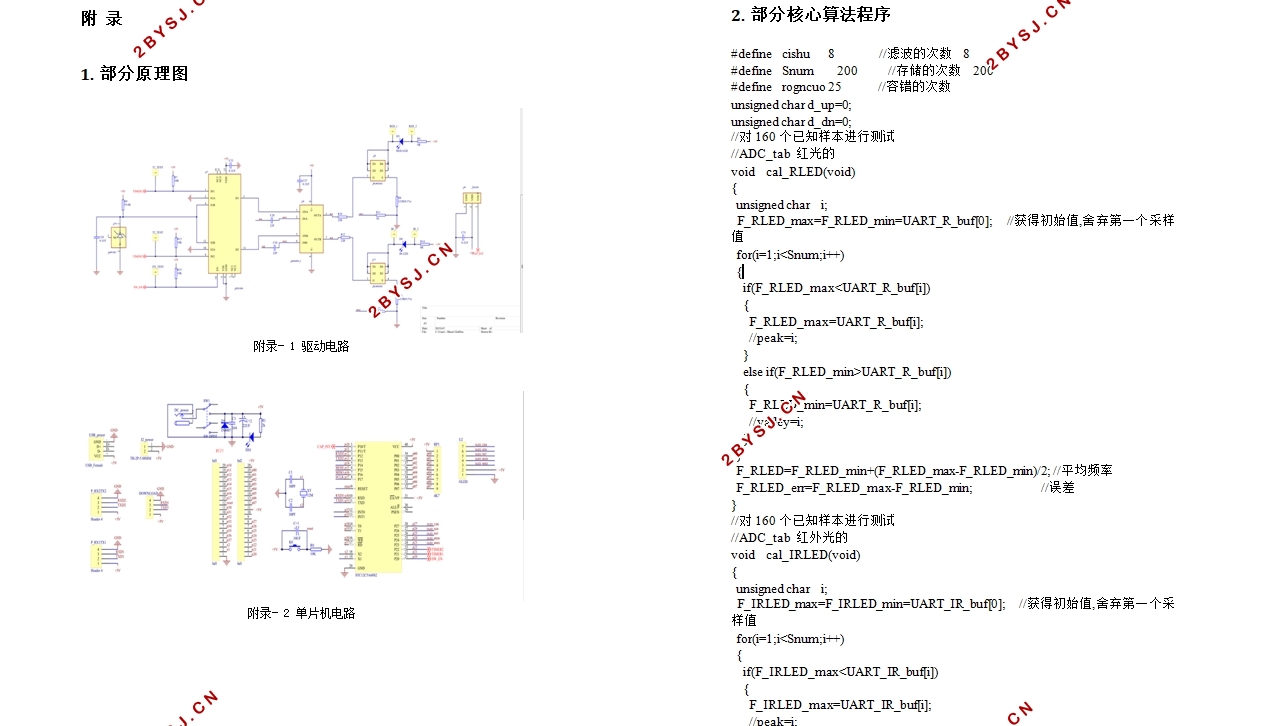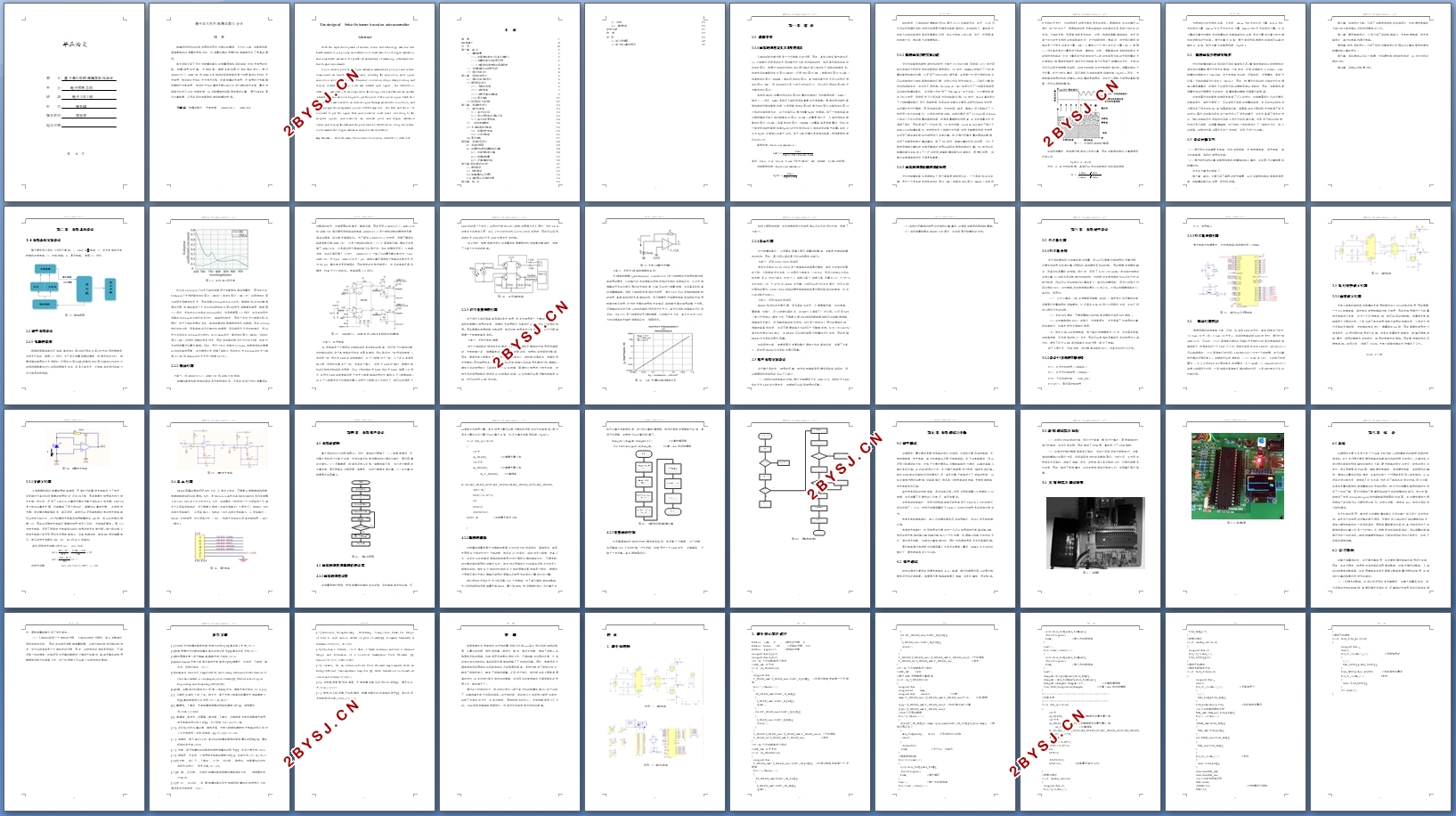基于单片机的脉搏血氧仪设计
无需注册登录,支付后按照提示操作即可获取该资料.
基于单片机的脉搏血氧仪设计(任务书,开题报告,外文翻译,论文11300字)
摘 要
随着现代科技的迅速发展和全民医疗意识的增强,人们对心率、血氧饱和度等健康指标的测量也更加关注,对测量仪器的便携化和准确度也有了更高的要求。
本文详细介绍了无创式脉搏血氧仪的测量原理和系统组成,包括光信号的获取、脉搏信号的采集、光电转换、数据处理和显示系统等的设计。通过ADA4505-2、ADR1581和ADG1636构成的驱动电路获得一定频率的红光和红外光信号,然后将红光和红外光透过手指,获得脉搏的光信号,光信号经过光敏器件器转化为电信号,然后经过双运算放大器LM358进行滤波放大处理,最后送到单片机进行A/D转换处理,以及脉搏值和血氧饱和度的计算,通过OLED显示计算结果,从而实现对血氧饱和度和脉搏的检测。
关键词:脉搏血氧仪 光电转换 ADA4505-2 ADG1636
The design of Pulse Oximeter based on microcontroller
Abstract
With the rapid development of modern science and technology and universal health awareness, people pay more attention to heart rates, blood oxygen saturation, and some health indicators, for portability and accuracy of measuring instruments also have higher requirements.
A non-invasive pulse and oxygen saturation measurement principle and system components are described in the paper, including the acquisition, pulse signal acquisition optical signals, optical frequency conversion, design data processing and display systems. To obtain a red and infrared light signals , the ADA4505-2, ADR1581, and ADG1636 are comprised to the driving circuit ,and the red ray and the infrared ray penetrate your fingers to get the pulse of the optical signal. Catch the optical signal and convert to an electrical signal through photoelectric conversion, and then through the enlargement process LM358 amplifier , the filter and the A / D converter to get the signals that microcontroller could accept. According to the accepted signals, microcontroller can calculate pulse and oxygen saturation values ,and display the data and the pulse wave by OLED screen .Using the system could measure the oxygen saturation and pulse rate successfully.
Key Words: Pulse Oximeter; Photoelectric Conversion; ADA4505-2; ADG1636



目 录
摘 要 I
ABSTRACT II
目 录 IV
第一章 绪 论 1
1.1 课题背景 1
1.1.1血氧饱和度定义及其生理意义 1
1.1.2 脉搏血氧仪的发展历程 2
1.1.3 血氧饱和度检测的基本原理 2
1.2 脉搏血氧仪的研究现状 4
1.3 设计所做工作 4
第二章 系统总体设计 6
2.1系统总体方案设计 6
2.2硬件系统设计 6
2.2.1 光源的选择 6
2.2.2 驱动电路 7
2.2.3 信号采集处理电路 9
2.2.4显示电路 11
2.3软件系统方案设计 11
第三章 系统硬件设计 13
3.1 单片机电路 13
3.1.1单片机介绍 13
3.1.2设计中用到的引脚介绍 13
3.1.3单片机外围电路 14
3.2 驱动电路模块 14
3.3光-电转换放大电路 15
3.3.1前置放大电路 15
3.3.2主放大电路 16
3.4显示电路 17
第四章 系统软件设计 18
4.1系统流程图 18
4.2血氧饱和度和脉搏值的计算 18
4.2.1血氧饱和度计算 18
4.2.2脉搏的测量 19
4.2.3采集通道控制 20
第五章 系统调试与分析 22
5.1硬件测试 22
5.2 软件调试 22
5.3故障调试以及原因 23
5.4 实物图以及测试效果 23
第六章 结 论 25
6.1总结 25
6.2 误差影响 25
参考文献 27
致 谢 29
附 录 29
1. 部分原理图 30
2. 部分核心算法程序 31
